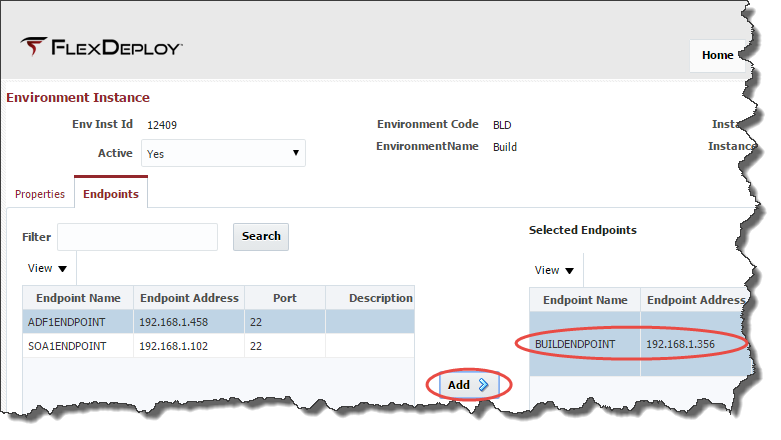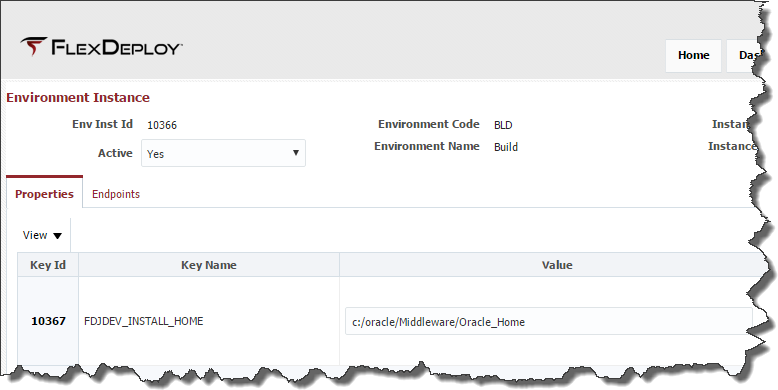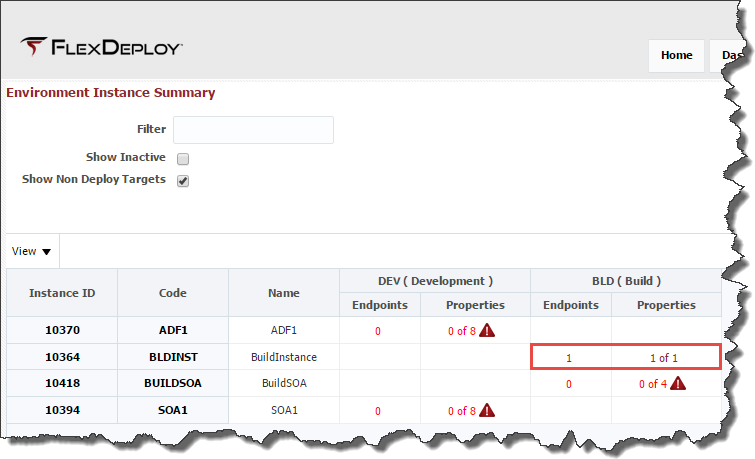- style
Configuring Environment Instances (Getting Started)
An Environment Instance, as its name suggests, is simply an association between one environment and one instance. The Environment Instances were created automatically when we associated the instance to environments. The association can then be used to assign endpoints and provide values for any properties mapped to those environment instances (through workflows or plugin operations).
In this guide we created BuildInstance and BuildSOA instances and associated them to the Build environment. On the deployment side, we created two instances (ADF1 and SOA1) and associated them to the Development environment. So in total we have four environment instances.
To view the Environment Instances that have been established select Topology -> Environment Instances from the menu.
Notice that the four instances we created are represented as rows and that the two environments we created are represented as columns. Where an instance and an environment intersect is known as an environment instance. There are two cells within this intersection – the number of configured endpoints, and the number of configured properties.
Locate the Endpoints column (identified by the blue arrow) in the intersection of the BuildInstance and the Build environment. Click on the number in that column to associate endpoints to that environment instance.
Select the BUILDENDPOINT endpoint which you configured in an earlier step (on the left), and click the Add button to shuttle it to the selected endpoints (on the right).
Click the Save button to save the changes, and then click the Properties tab to allow entry of properties required for this environment instance.
We have associated an operation of the JDeveloper plugin to the Build instance. This plugin operation requires a property to be configured on the environment instance. Enter a value for the required property and then click the Save button to save your changes. Then click the Back button to return to the list of environment instances.
Note that the BuildInstance/Build environment instance now has one associated endpoint and 1 of 1 properties configured.
Repeat the steps above to configure the endpoints and required properties for the BuildSOA/Build, ADF1/Development and SOA1/Development environment instances. In this case, you will need to configure properties for the plugin operations associated with those instances.
Note that for the BuildSOA/Build environment instance, you can associate it to the same endpoint that you will use for the DeploySOA/Development endpoint. From a SOA build perspective we simply need the libraries of any SOA Suite installation.
Related content
- style



